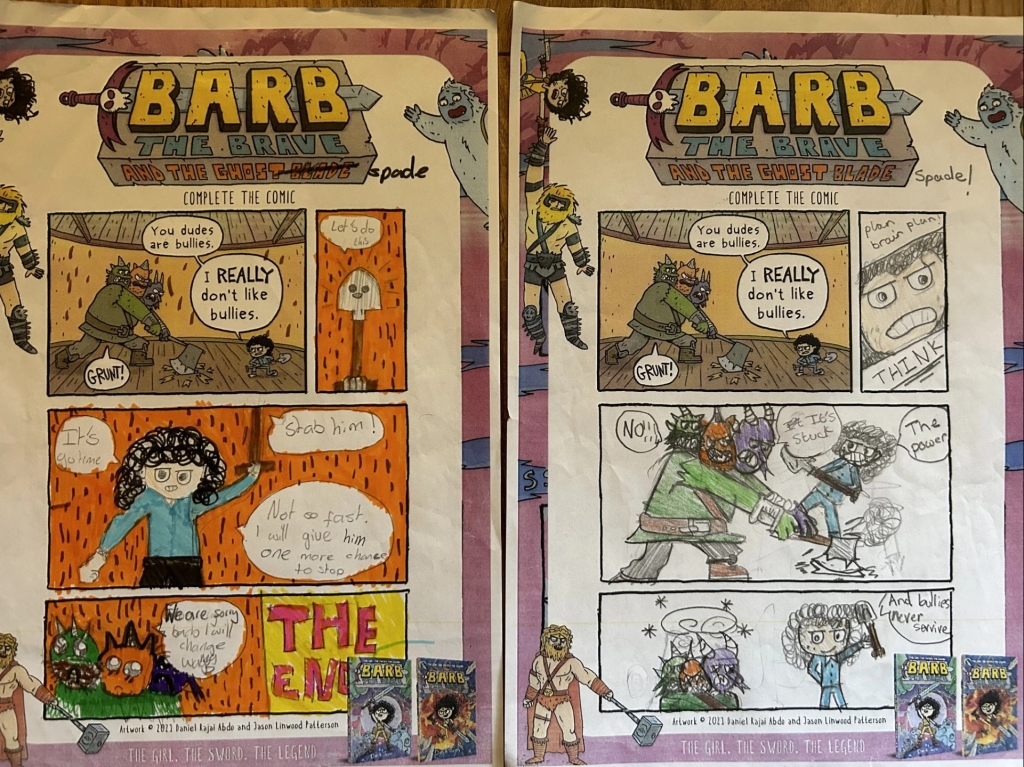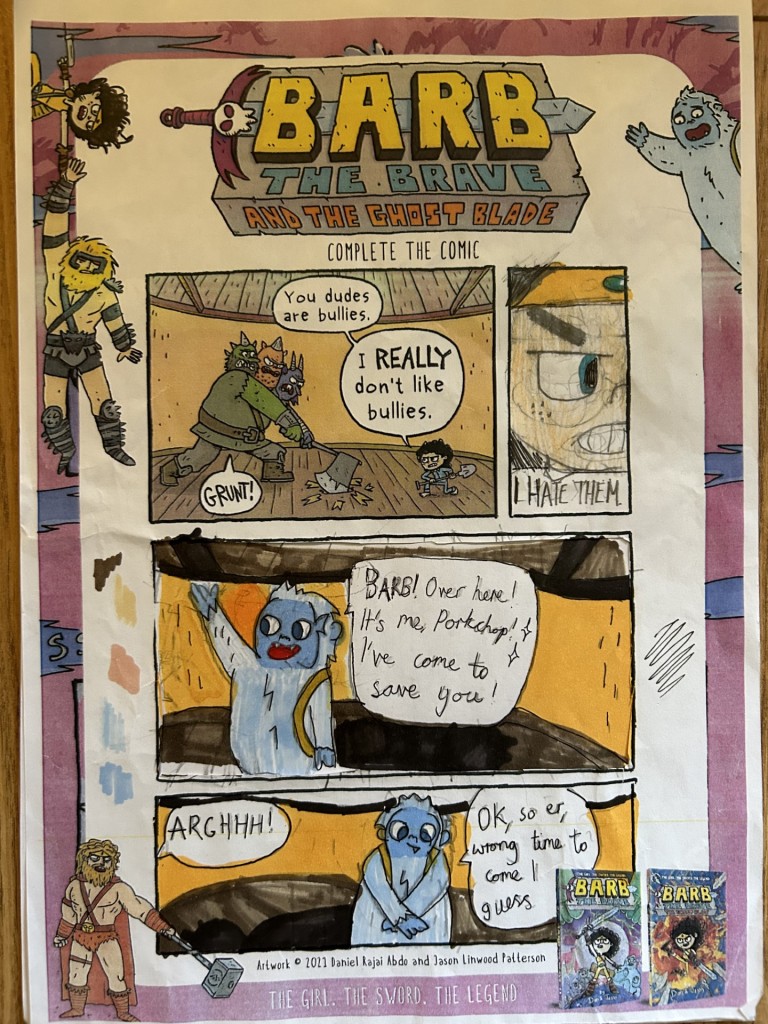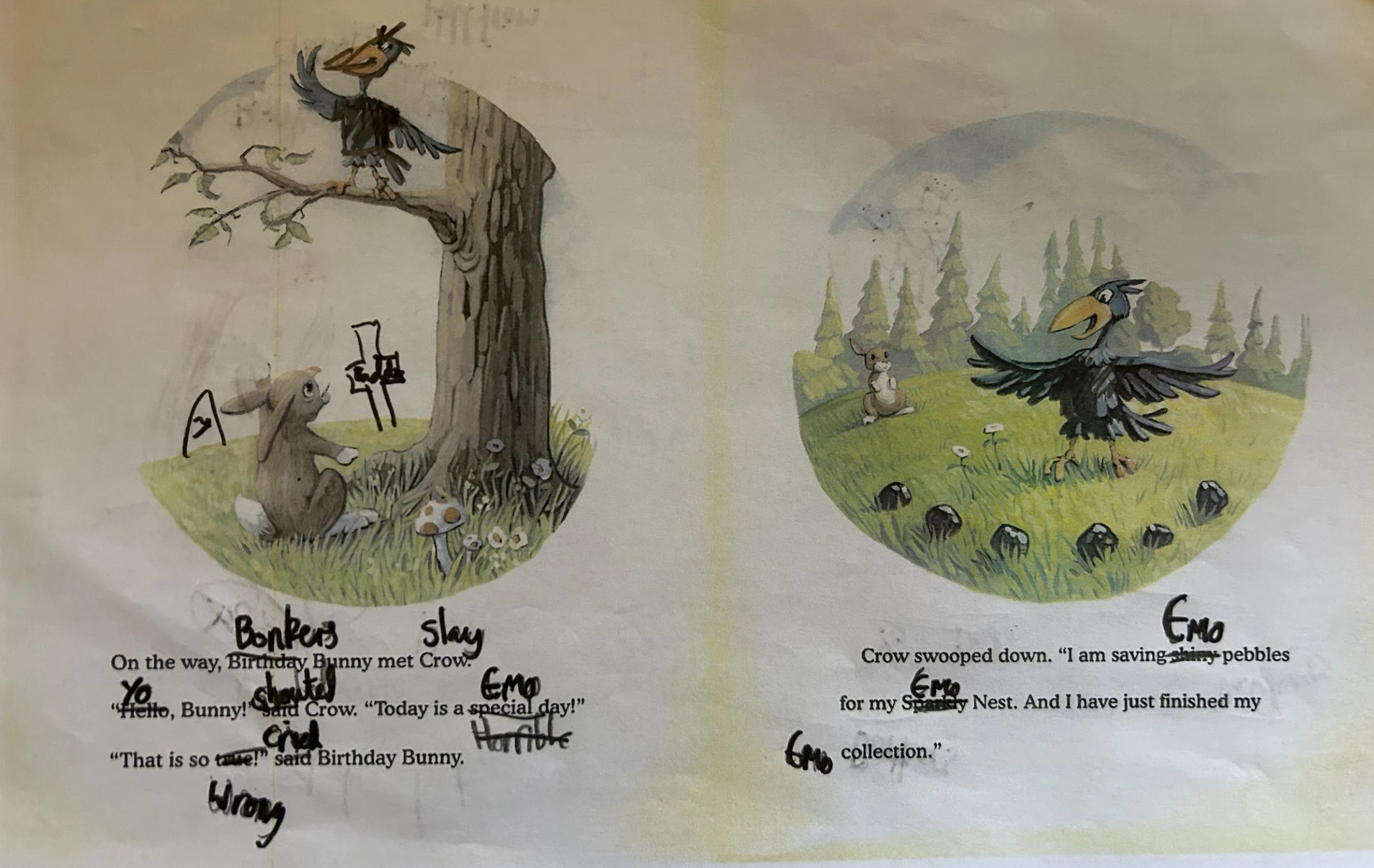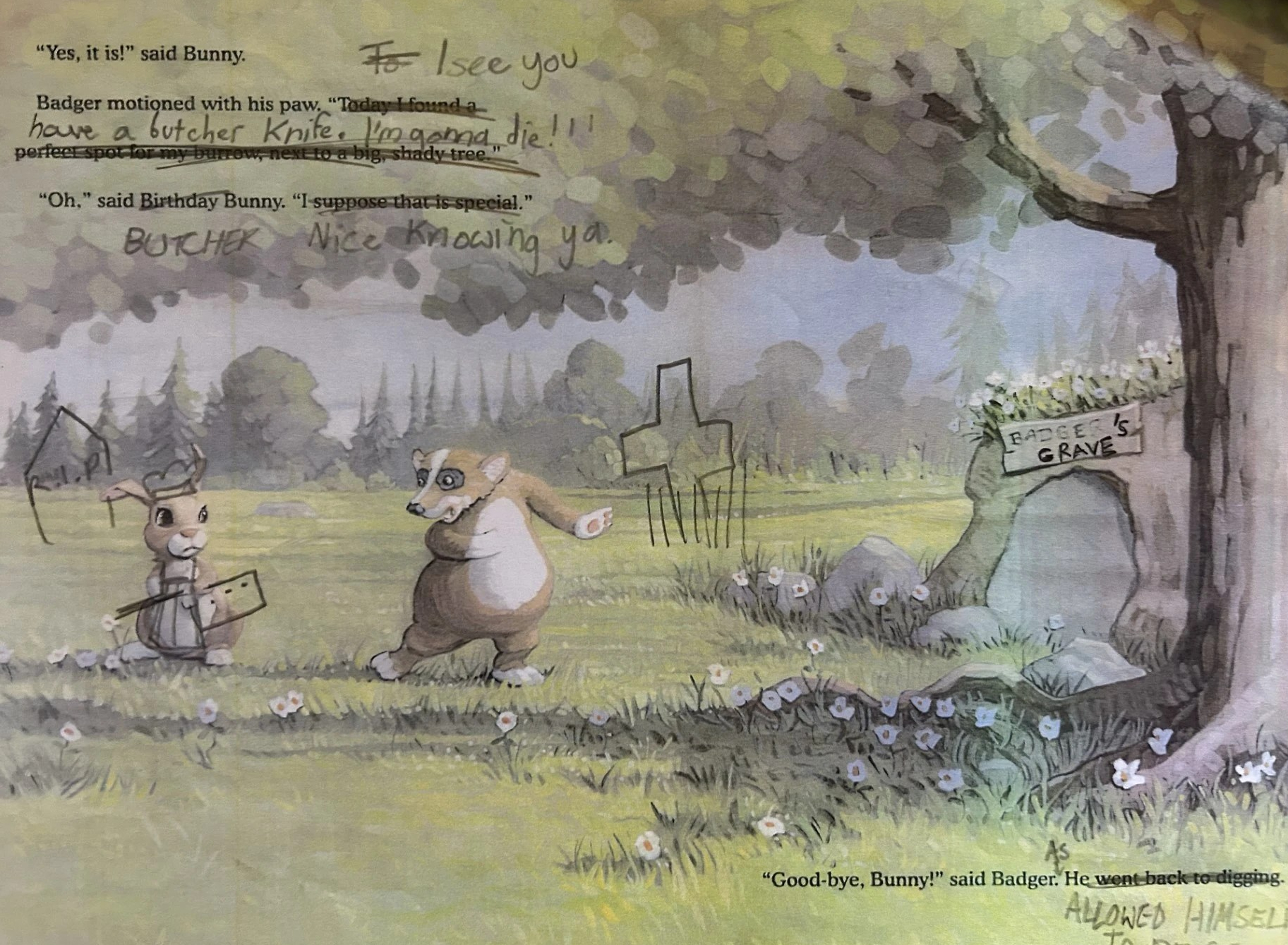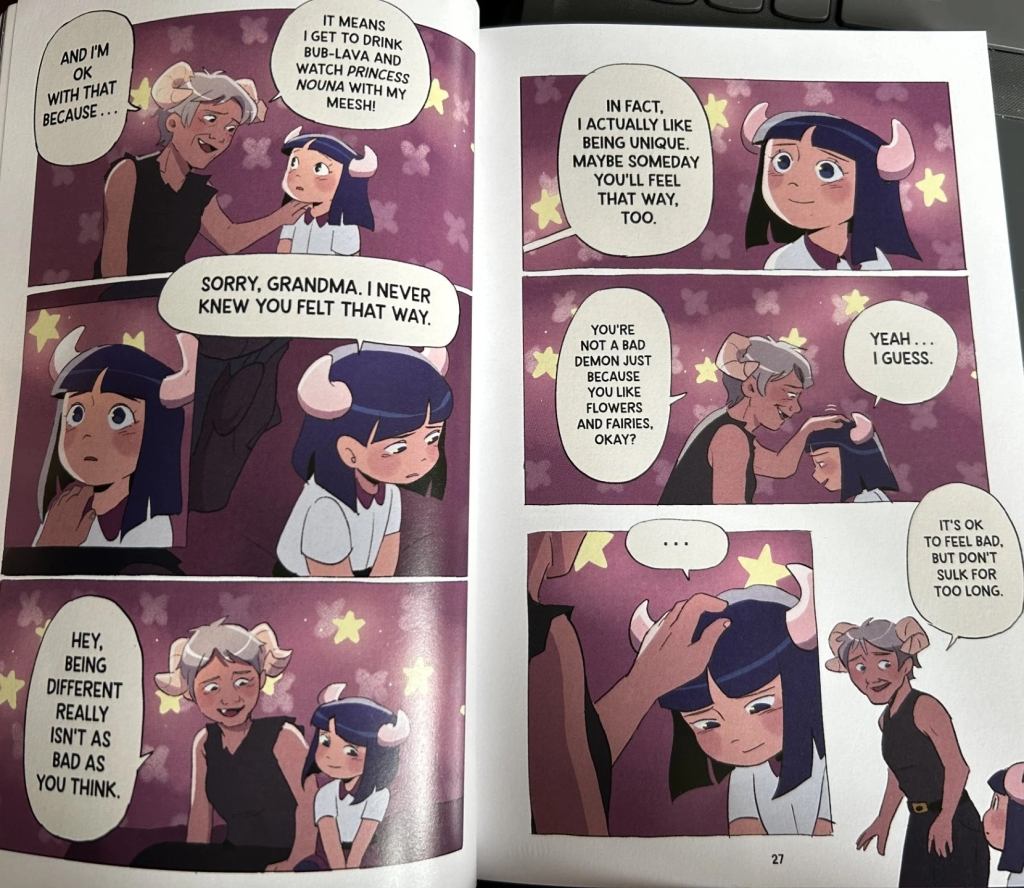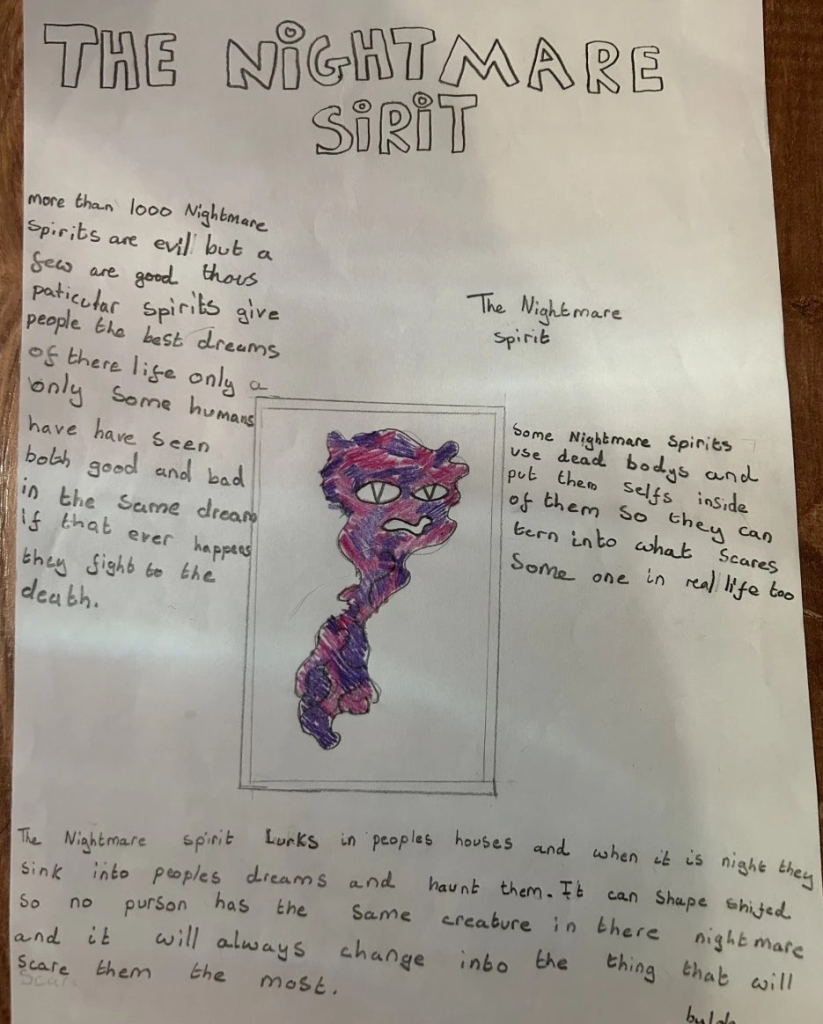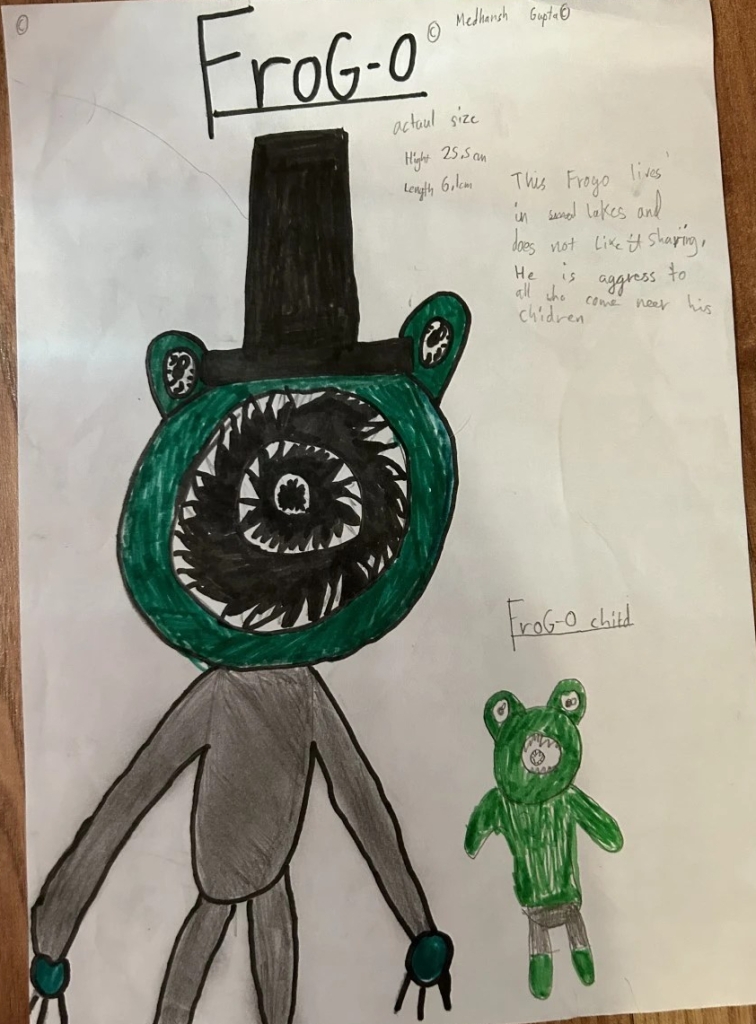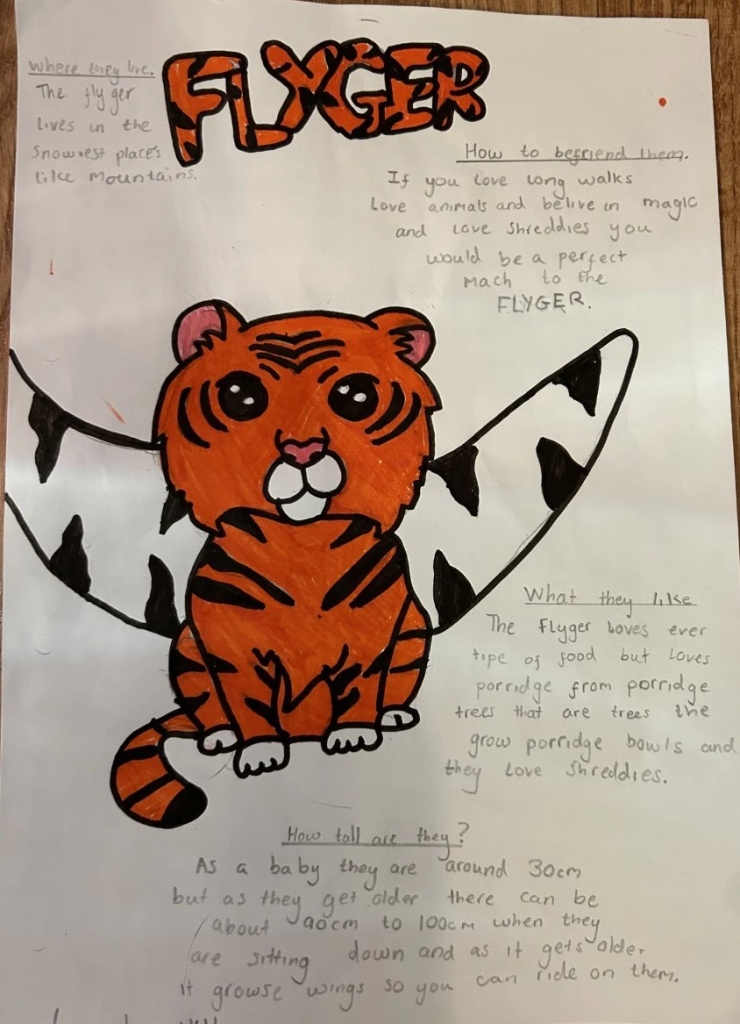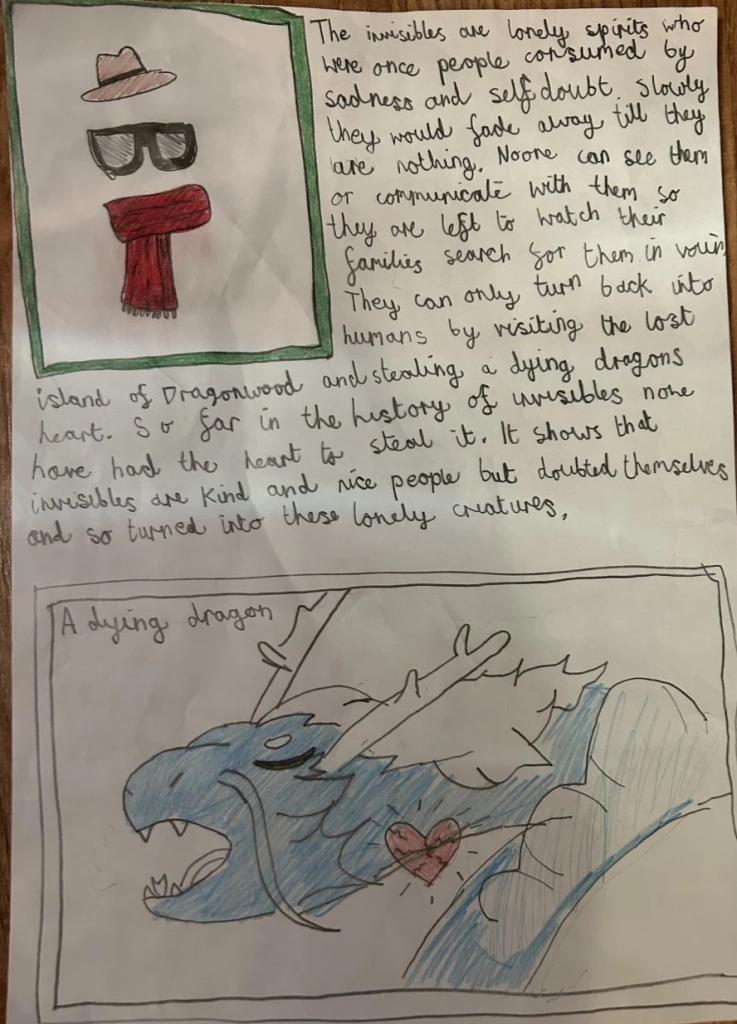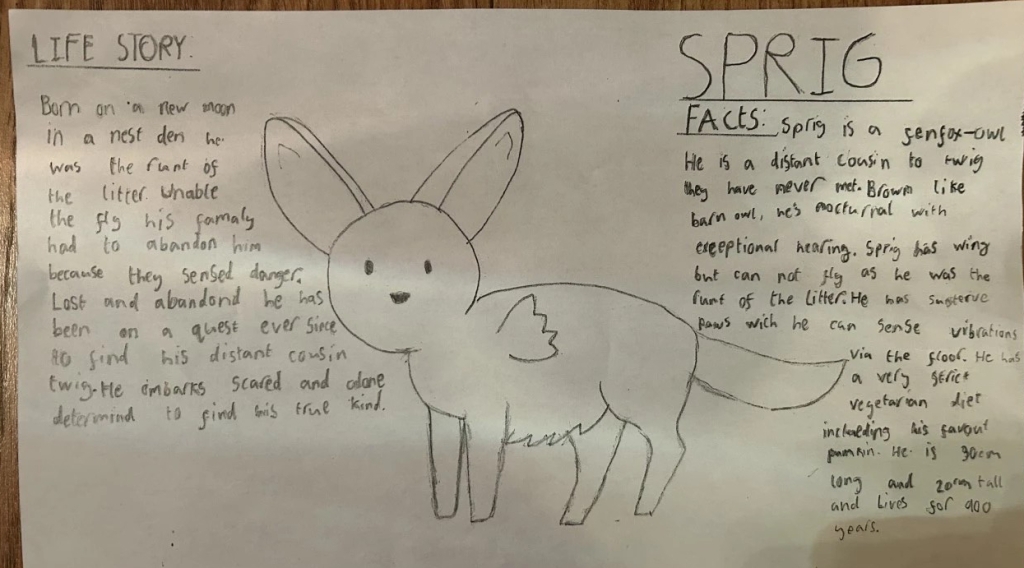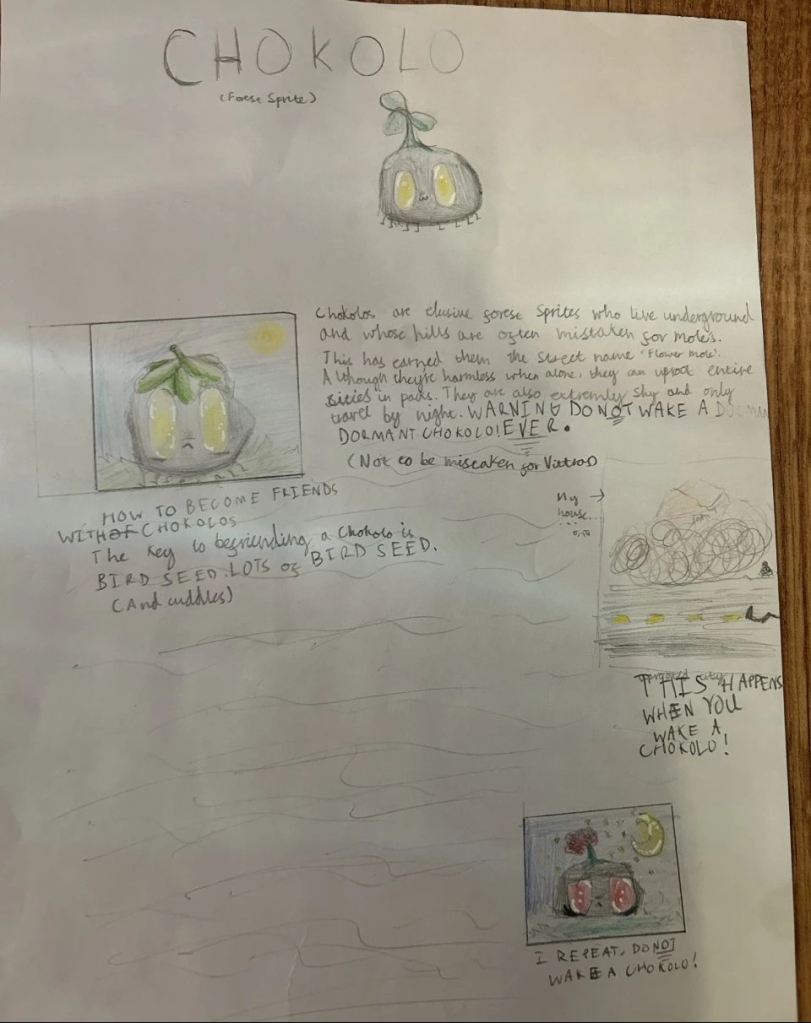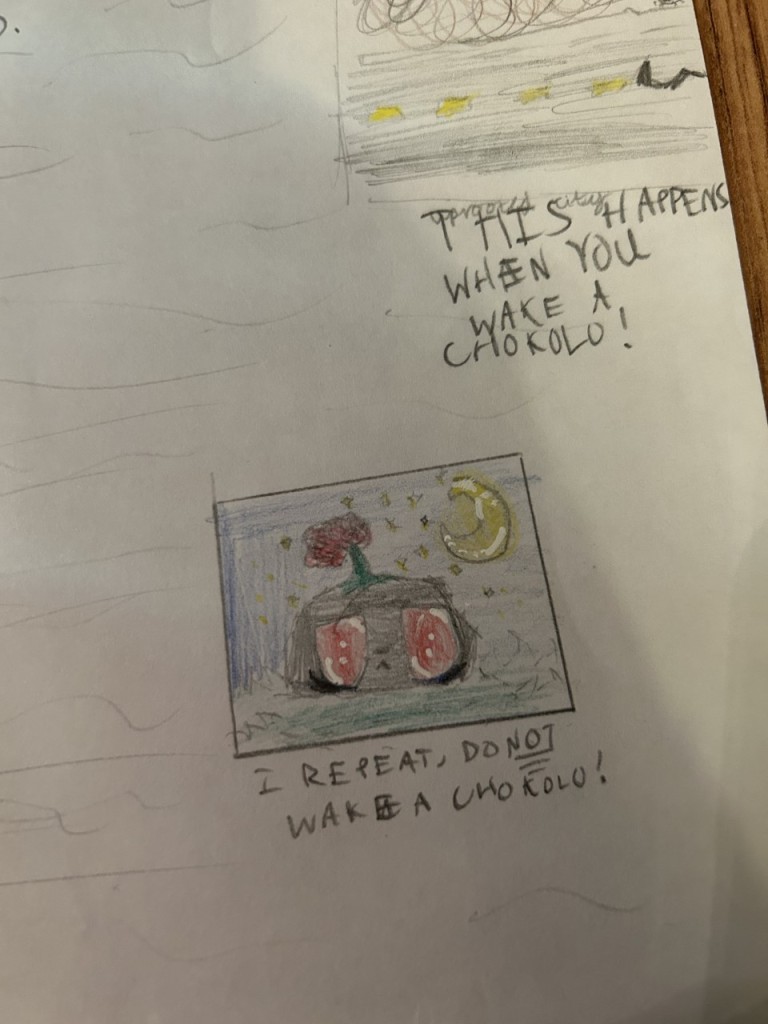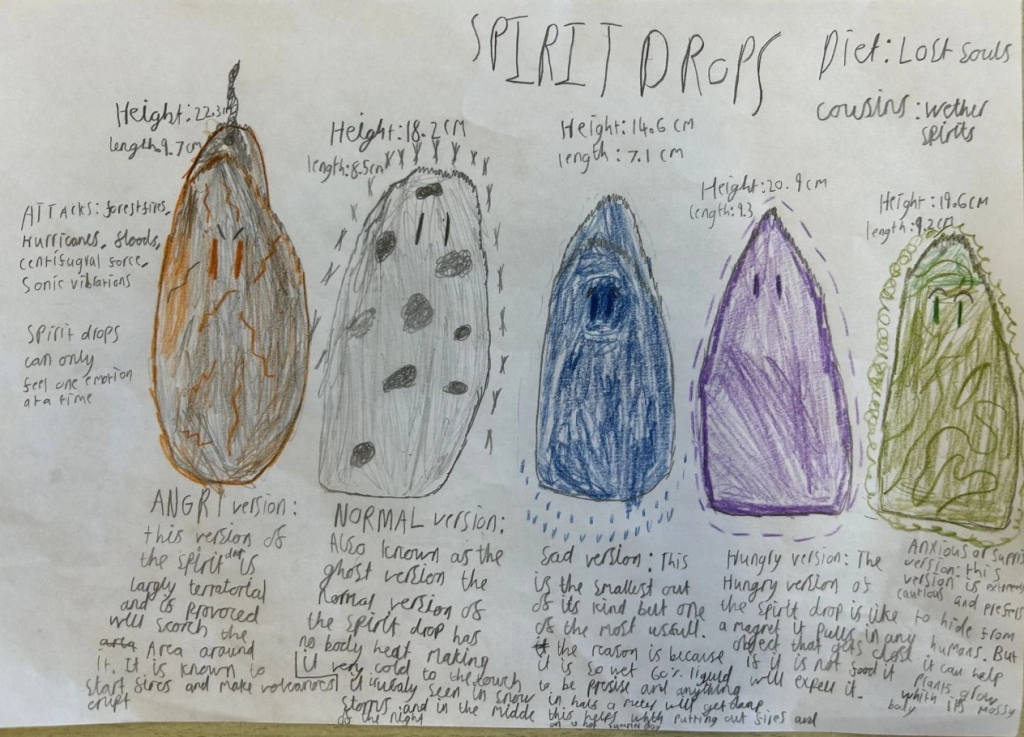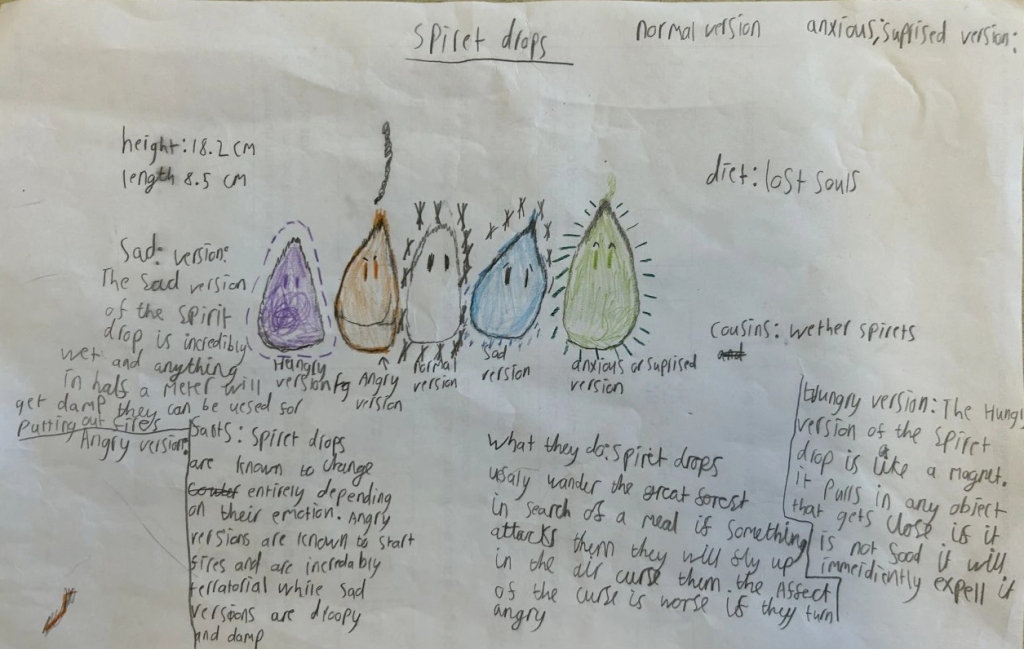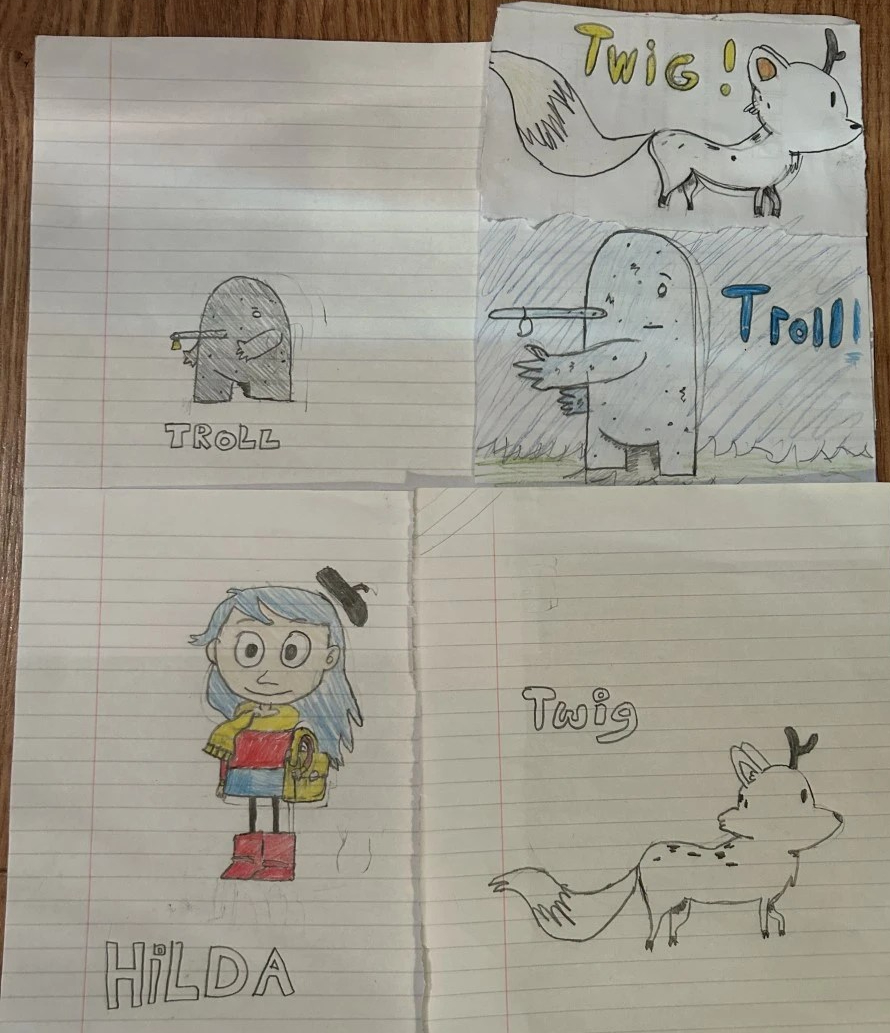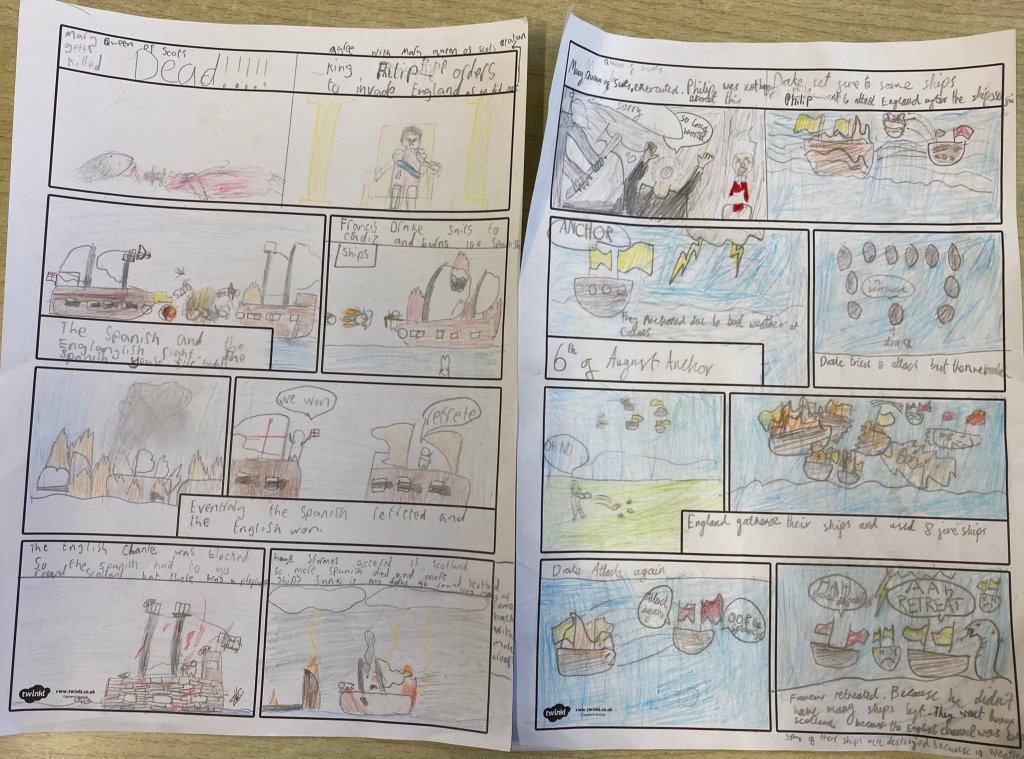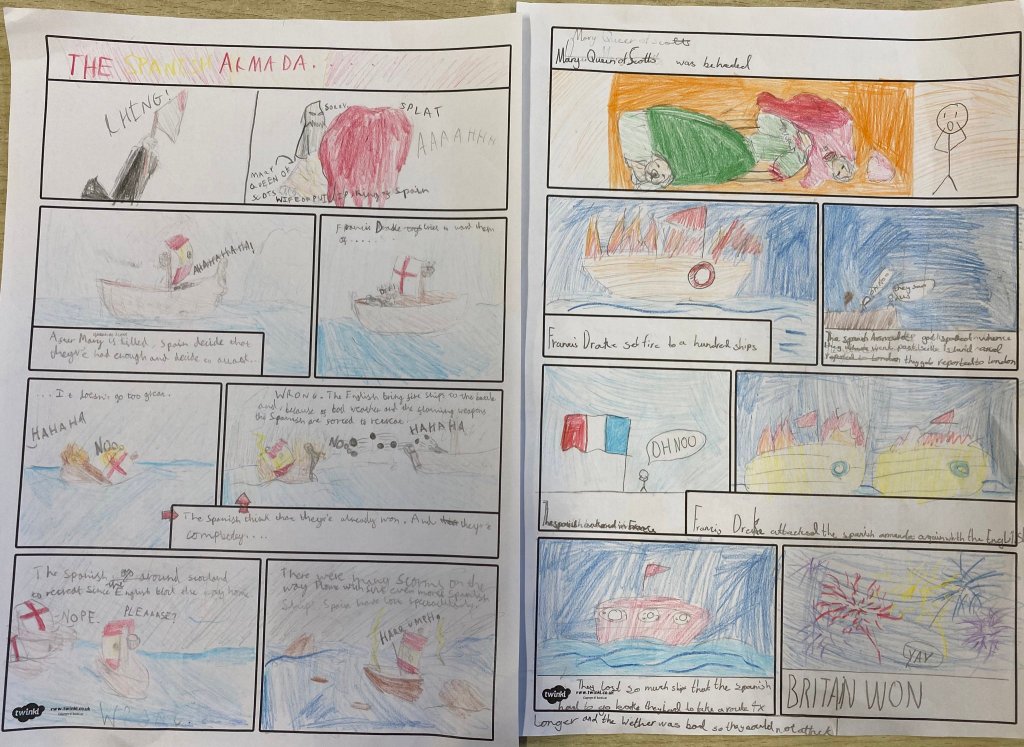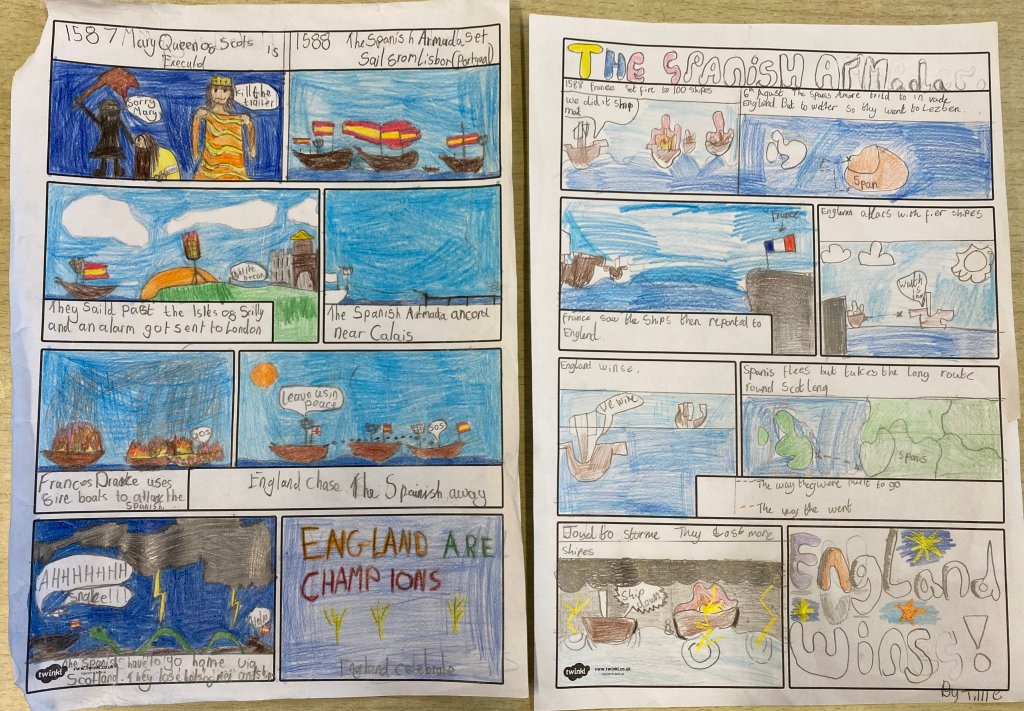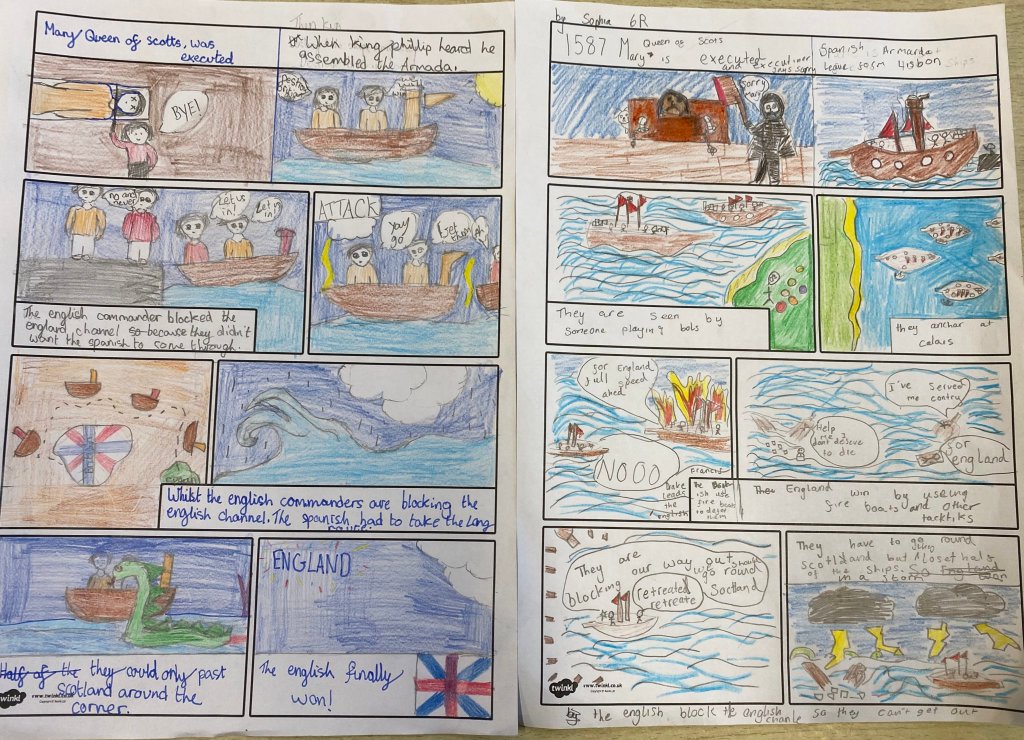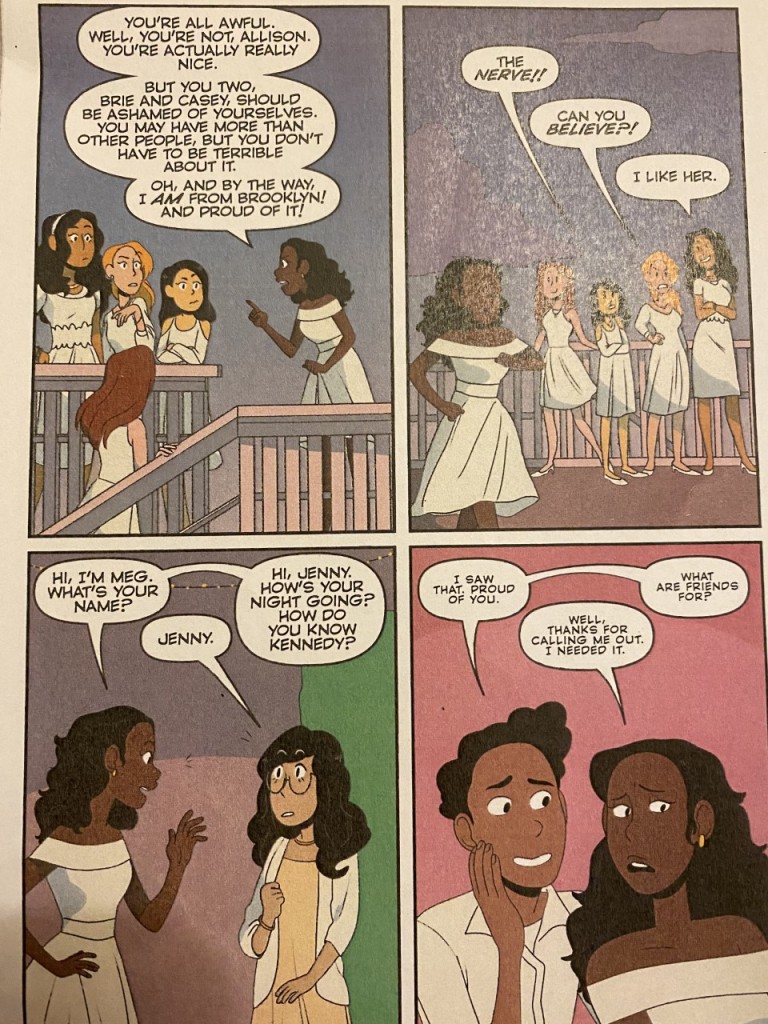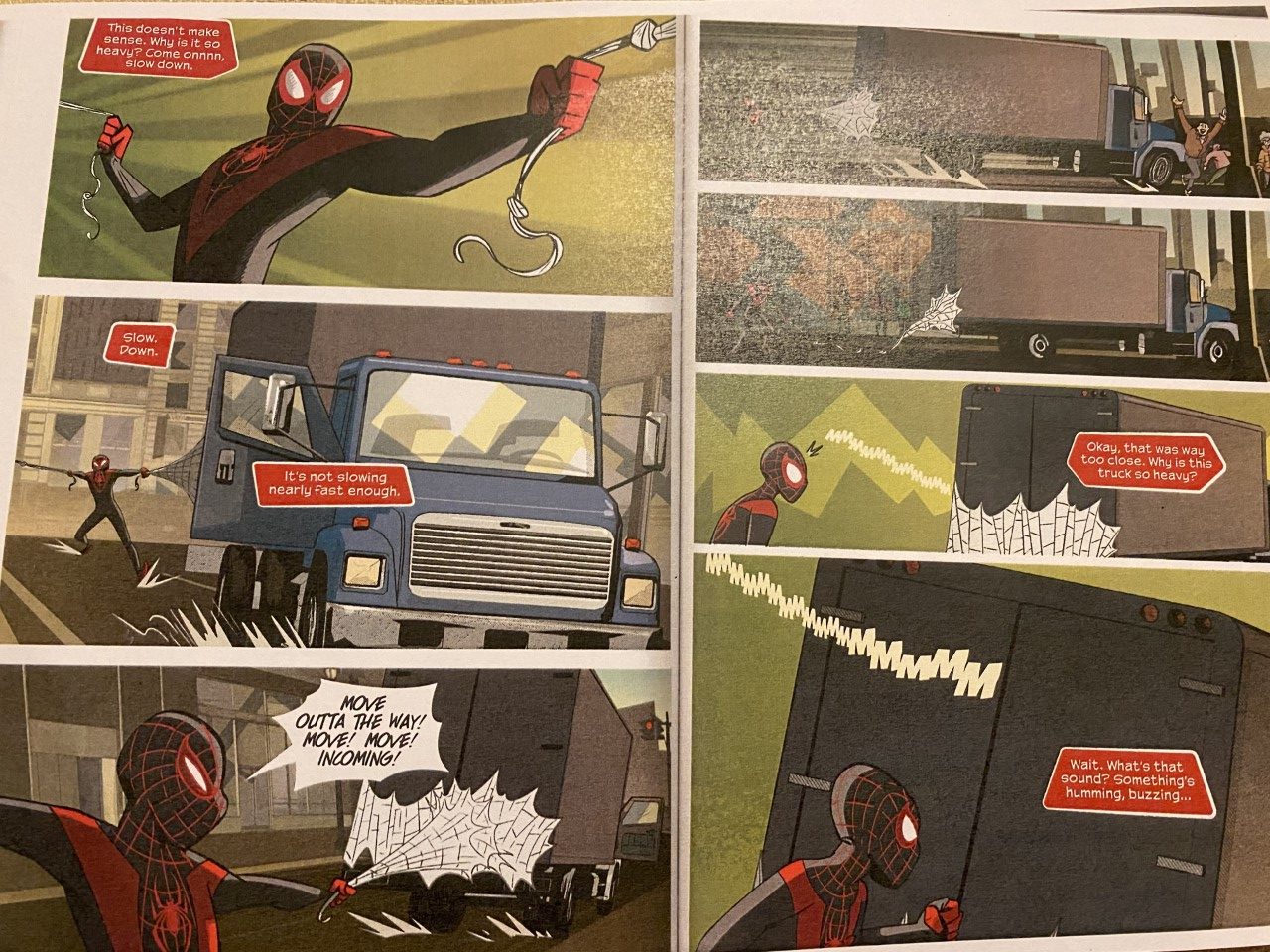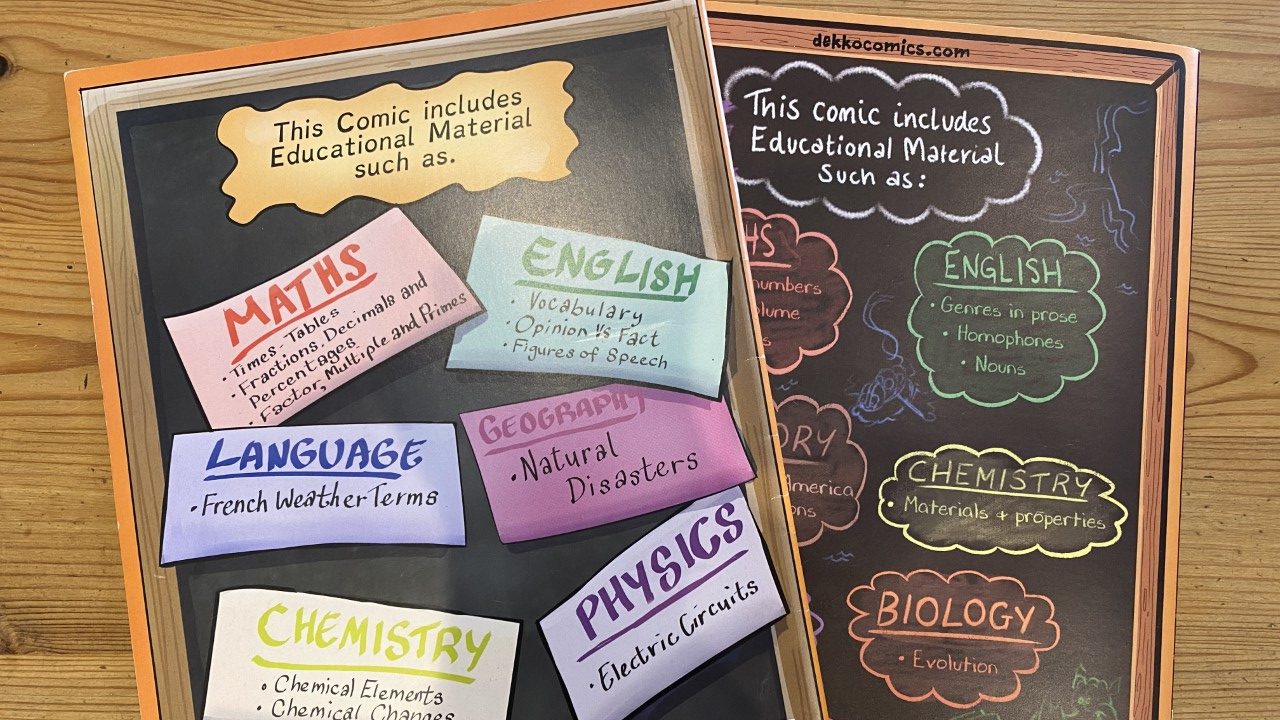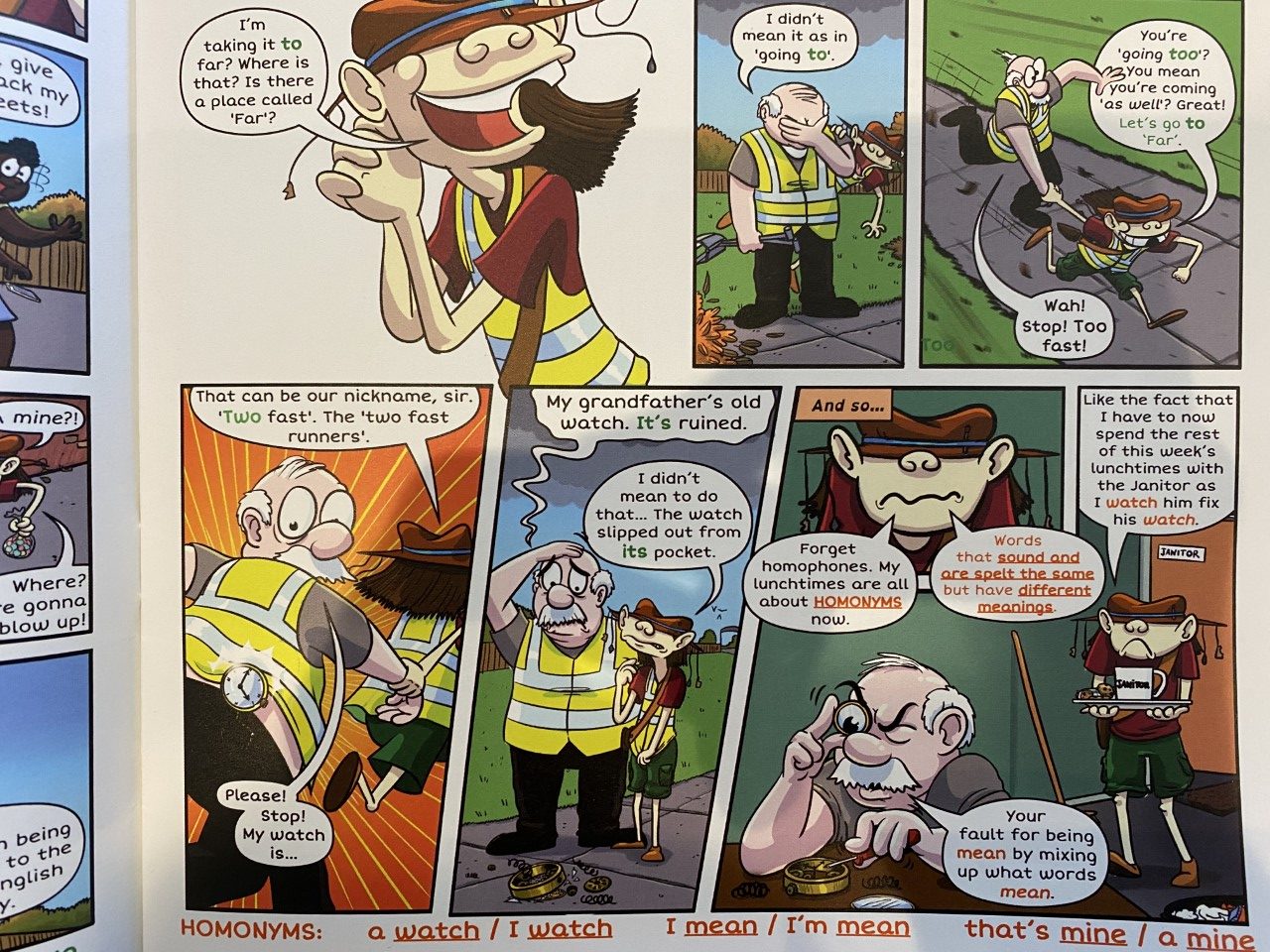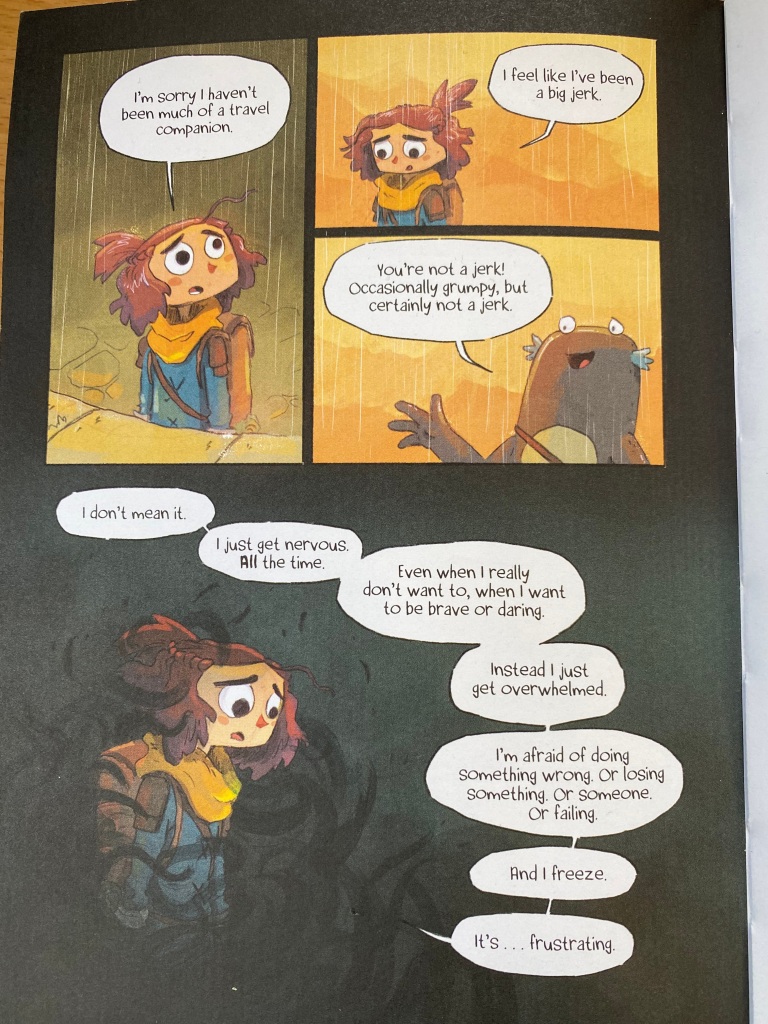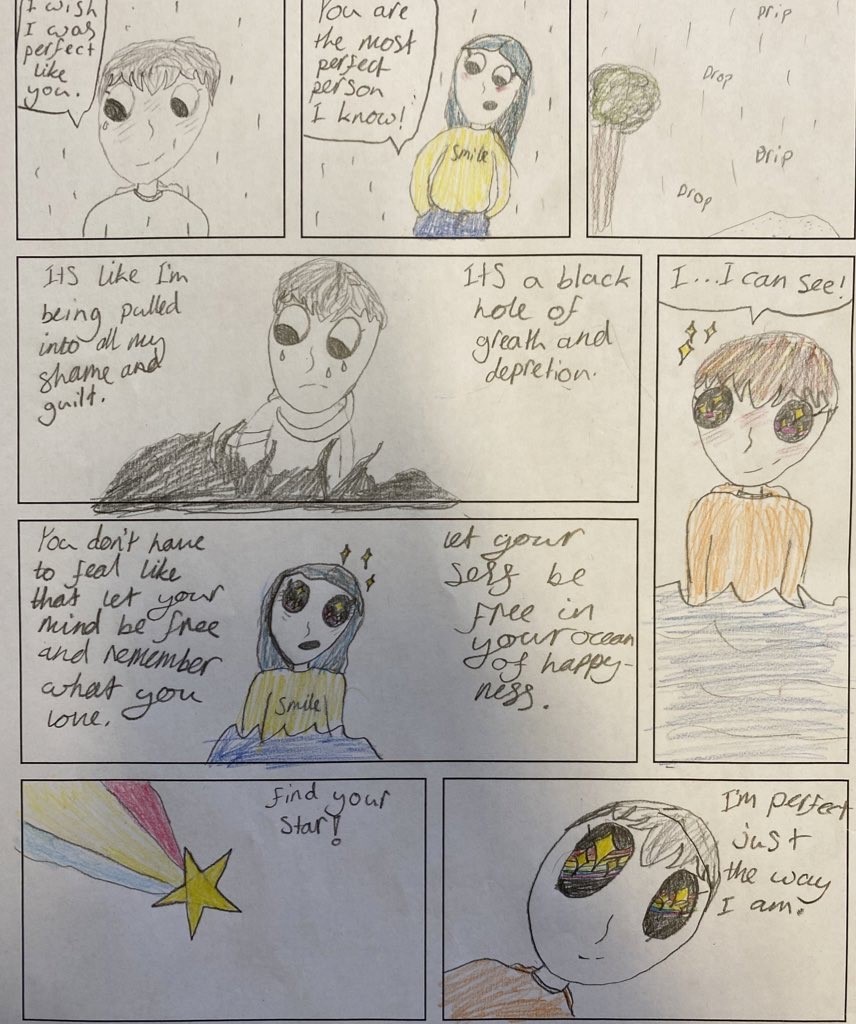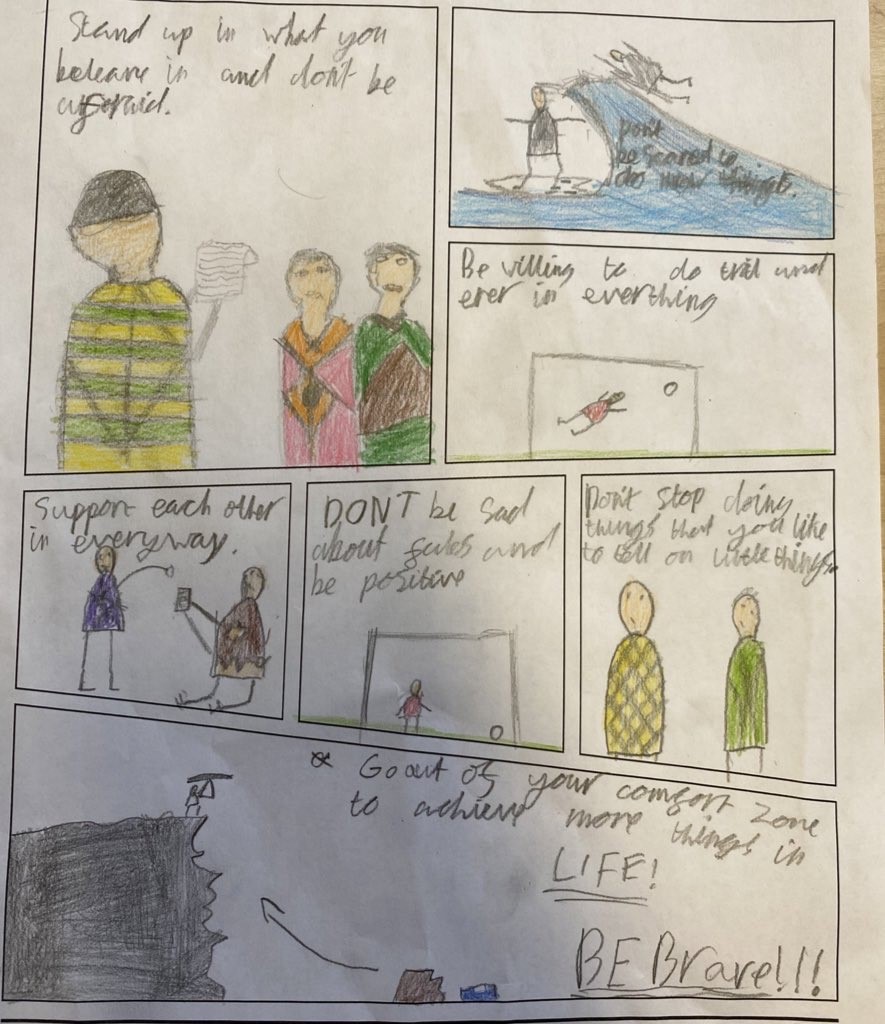Unintentionally, I’ve been pretty quiet on here this year but I aim to explain why and explore what I’ve been up to with a small focus group of children. Apologies for the lack of images, I forgot to take any and am refusing to go into work in the first week off! In September, I started at a new school who were looking to run a project based around graphic novels. The brief was loose, but the funding they had secured was based around helping children to improve their reading, with a focus on supporting more disadvantaged pupils if possible. I had already provided some CPD for the school and then a job came up, as soon as I had accepted the position the project was put in my hands. After spending a large amount of time worrying that this would make me look like a one trick pony or limited as a practitioner, I gleefully accepted the responisbility.
Using a list created by the teachers at the end of the previous year, I selected ten children to come out on a Thursday afternoon and work with me and a TA as a group. Our first few weeks revolved around simply exploring some different books, talking about what we had enjoyed in them and just giving them a chance to find out what they enjoyed reading. Each child also answered a reading survey during this time, it focused on their perception of reading at home and school, along with giving them a chance to explain their knowledge of comics and graphic novels. As a new teacher to the school, this also gave me a chance to understand the children better, especially those who weren’t from my class. The results basically split the group into two, those who loved reading comics but nothing else and those who didn’t enjoy reading anything but would be willing to give the project a go.
Within a couple of weeks, the group was already acting positively towards their reading and our time spent discussing what they’d enjoyed lead to lots of peer recommendations. Unsuprisingly, Amulet quickly became the top recommendation and word spread quickly to those outside the group. This resulted in the headteacher popping in and after a page or two he disappeared with the group’s copy of book 1, he returned it the next day with a glowing review. After roughly half a term, we started to move on from just chatting and sharing books, this was still present in the meetings but was assigned to the first five minutes only. The next task was to start exploring pages or extracts in greater depth. I used some of my old lessons and ideas for this, we analysed vocabulary, text marked pages and focused a lot on improving inference skills. This was an identified weakness and one of my biggest argument about comics has been the help they can provide with this.
At this point of the project, I had originally planned on moving the sessions on to become basically another English lesson, my thinking being that they would improve reading and writing with this. However, after a week or two it became clear that this group was desperate to create their own work and constantly analysing other people’s was no longer getting the best out of them. In a bid to develop their all round skills but also keep them highly engaged, I changed direction and focused on them creating their own work as part of their learning. We could still develop the required skills doing this, whilst allowing them to express themselves how they wanted to. The first attempt at this involved giving them an open ended page that simply contained the words “it’s time” and had an image of a car parking by a man on a bench. Each pupil went off in a different direction, some slightly darker than others! Crucially, while they were drawing and planning out they were constantly talking about whtat their character was doing and why they were doing it. Using only two panels, they were creating back stories, future events and stretching the possibilities as much as they could. None of them realised this though, they just thought they were talking with their mates about the page.
After this session I was confident that the group could progress as I wanted but differently to how I expected. To keep them inspired and present opportunities to keep improving their writing ability (reading was taking care of itself by this stage) I decided that each member would have a go at planning and creating their own comic. Instead of just letting them go wild, each session focused on a specific aspect. Firstly, they created and designed a hero, followed by a villain before finally creating a setting. This took much longer than anticipated but some of that was because they were desperate to ensure their characters were as well developed as possible. My role was to support their ideas and then focus on how these could be expressed in the best form possible. To help with their drawing, we arranged for an artist (Arran Matthews) who had produced work for Marvel to come in and deliver two workshops, we also invited some other comic enthusiasts from the school to this in order to make the most of his expertise.
All of the work on villains, heroes and settings allowed us to recap similes, metaphors, sentence structure, powerful vocabulary and much more. Most of this was done through discussion which helped take away the stigma for some of the less confident members, it was noticeable how they were happier joining in with these very relaxed discussions and it was beneficial to their writing and most importantly their thought process. No longer were they settling for the first thing that came to mind, they were looking at what they’d written and taking time to try and find the best word or structure to support that.
Initially our plan was to write the comics, print them and then sell them to students after school. Sadly, due to transition, trips and everything else that goes on with schools in the final term this didn’t happen. We did manage to squeeze in a trip to Waterstones though and pick up some new books for the group. By this stage they had read most of the limited selection and were desperate for new ones, so we used the last bid of budget remaining to visit our local store and let them all choose the next books. They loved having the power and were surprisingly well restrained, although they tried far too many times to sneak in books that we told them weren’t appropriate!
Each member of the group got about half way through creating their own comic and some were looking brilliant, but we simply ran out of time. However, even when it was clear they were going to struggle to fit it in, the group were still asking if we could find time for them to do more, still trying to attend their sessions even when special things were happening and they showed a real love for their Thursday afternoon work. I had several parents message me and say how much their child was reading and drawing at home thanks to the group and several staff members commented on how positively their students talked about going out on a Thursday afternoon. They liked being part of the group and were caught using it as a way to wind up others on occassion!
Thankfully, I managed to find time to quickly survey the group again to see if our year of work had helped them in any way or whether it was just an excuse to get out of the classroom. I spend a lot of time moaning about how data dictates school life too much, so I appreciate what I’m about to say isn’t the be all and end all. It does show the positive effect that this group had on reading attitudes though and combined with their regular teaching they made good progress in reading and writing, both in class and according to test data. The key improvement for me was their score in relation to reading enjoyment in school. At the start of the project it was a lowly 5.2/10 and if you took out the two Phoenix comic obsessed participants it would have been much lower! At the end of the project it had gone up to 8.2/10, and the main reason that all of them gave was having access to graphic novels and comics. Ironically, the score for their enjoyment of reading at home went down because they didn’t have access to the books we now had in school! They also loved having the opportunity to talk about them and recommend them to each other, showing the power of book blether and also knowing some kids lit yourself. I loved being able to join in their conversations and offer my opinion, although it nearly always ended up digressing onto what our favourite Marvel series was. Hawkeye for me if you’re interested.
Overall the project was a success, it wasn’t perfect by any means but everyone enjoyed the group and engaged positively with it. Each student made progress, some more than others but the goal was always about enjoyment first and out surveys show this. Moving forward, I will try and run something similar next year. Due to staff and time constraints it may end up being lunchtime based rather than an afternoon session but the goal will remain the same, to use comics and graphic novels to help improve pupil’s enjoyment of reading and writing.

